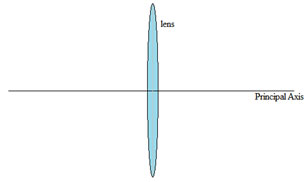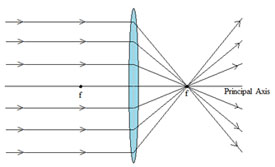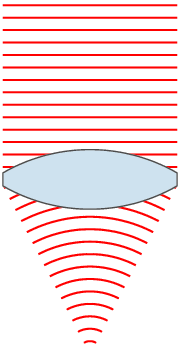
A lens is a transparent object that refracts light rays in a predictable way. Lenses are used to create images of objects for a variety of reasons. A lens can make a distant object look closer or a small object look larger. It can also be used to allow you to see a wider area (like with a peep-hole through a door). Finally, lenses can be used to correct poor vision by adjusting the image that your eye naturally creates.
Lenses can form real images or virtual images, depending upon the kind of lens you use and the placement of the object. To determine where an image is formed and what type of image it will be, it is helpful to draw a ray diagram like the ones we used in lesson 6 of this module to locate images formed by a flat mirror.
When drawing a ray diagram, the first step is to draw a reference line right through the center of the lens. This is called the principal axis of the lens.

In this lesson we will be working with a convex—or convergent—lens. A convex lens is thicker in the middle than it is on the edges. It will bend all light rays that are parallel to the principal axis so that they pass through the same point, called the focus. The distance from the center of the lens to the focus is called the focal length of the lens. Since light can pass through a lens in either direction, there is a focus on each side.

The problem with using a ray diagram like the one above to represent light passing through a lens is that it presents the idea that there are only a few light rays travelling through each lens. In reality, there are infinitely many. The following animation models "all" of the light that is travelling parallel to the principal axis as it passes through the lens.
